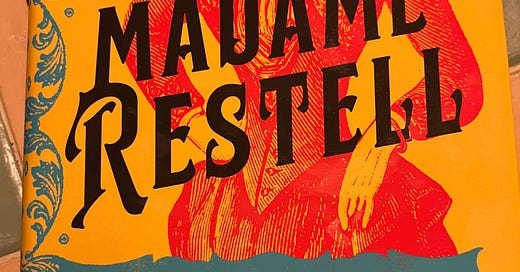New book looks at legendary abortionist
Madame Restell was a trailblazer in reproductive healthcare
A new book shows a famous American abortionist in a thrilling and entertaining light.
In February, Jennifer Wright, a Los Angeles writer, published Madame Restell: The Life, Death, and Resurrection of Old New York’s Most Famous, Fearless, and Infamous Abortionist. The book takes a creative nonfiction approach, with Restell as the central character in a work that uses character development and plot devices to thrust the reader from page to page.
While the titular character is the hero, the villain of the story is Anthony Comstock, a puritanical force in 19th-century New York who wanted to limit sexual practices among all people. Comstock pushed for obscenity laws that forbade the dissemination of information pertaining to birth control and abortion. Restell had advertised her services in newspapers for decades.
The real name of Madame Restell was Ann Lohman, a British immigrant who had fallen on hard times after her first husband died. She had a young child and faced poverty and possible prostitution. Instead, she connected with a pill compounder and developed an abortifacient that she eventually marketed and sold to women throughout New York City. She also developed an understanding of how to perform surgical abortions as well.
The practice made her a wealthy woman and she flaunted that wealth through showy carriages and ornate outfits. She became a socialite who dominated high society. Along the way, she faces harassment from newspapermen and law enforcement for providing her services.
It’s a fast-paced read that takes readers through a time that surprisingly embraced sexual practices with frequency despite living in the Victorian era, which has been portrayed as a time when conservative and traditional mores regarding sex and marriage prevailed. Madame Restell’s accumulation of wealth during that time was proof of that.
Compared to other works on the woman, Wright’s work reads more like a novel. It’s not academic at all in its tone. One thing that I felt would improve it would be the inclusion of drawings and renderings of Madame Restell that appeared in newspaper accounts at the time. All are free to use since they are not protected by copyright law. I’ve seen several and I included one below.
There are other books in this genre that might be worth exploring if a reader was fascinated by a criminal abortionist like Madame Restell. Rickie Solinger’s The Abortionist tells the story of Ruth Barnett, who ran an abortion ring on the west coast for decades. Another would be The Notorious Dr. Flippin: Abortion and Consequence in the Early Twentieth Century, which tells the story of Nebraska physician Charles Flippin, a black man who performed countless abortions until he pleaded guilty to a charge in 1924. I also wrote a feature about Robert Spencer, an abortionist who cared for 40,000 women in Ashland, Pa., including many who were movie stars.




